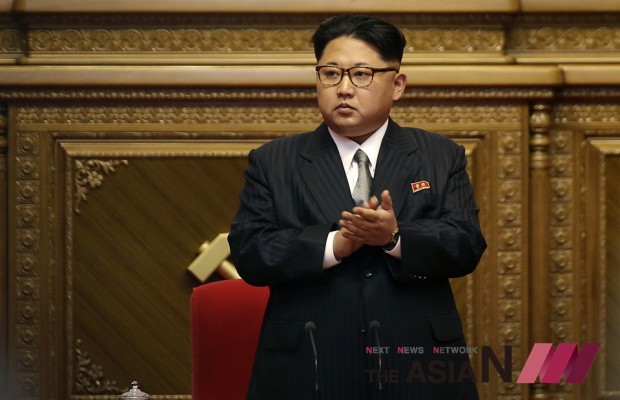Peace – a Work in Progress: Korean Peninsula Peace

North Korean leader Kim Jong Un arrives for the party congress while party representatives applaud in the foreground in Pyongyang, North Korea, Monday, May 9, 2016. North Korea has brought in more than 100 journalists from around the world to make sure that the 7th Congress of its ruling Workers’ Party gets global attention. Four days into the event, they allowed a small number of foreign journalists into the conventional hall where the congress was taking place. (Photo : AP)
The 33-year old Kim Jong-un is an insulated, unfettered ruler of North Korea. He has very successfully isolated his country, globally and politically, by flaunting nuclear arsenal and instilling the fear of god in the population he commands.
Just four years into his reign, young Kim wants to take on the world by making his presence felt. The global political dimensions are increasingly getting more complicated by the day. Since January this year, Kim Jong-un has been boasting about his nuclear capabilities and flexing his nuclear muscles often. Alarm bells are louder in South Korea compared to other political big wigs, including the United Nations. Naturally so…South Korea stands to lose more than any other global player in the event of a catastrophe.
Until recently, China was not using its economic leverage to punish North Korea, primarily because economic sanctions could trigger a financial collapse for North Korea. In which case, the North could potentially become part of the Republic of Korea, a U.S. ally. Historically, China would rather tolerate the dictatorial regime of Kim Jong-un with nuclear capabilities, rather than have the US sitting close on the border. Being the biggest trading partner, a source for food, arms and energy, China was not very likely to abandon the “alliance treaty” with North korea anytime soon.
After North Korea’s third nuclear test on February 12, 2013, Chinese President, Xi Jinping, soon after coming to office, took a stronger stand against North Korea’s nuclear program. In view of geo-political realities, in 2013 itself, President Xi delivered a harsh message to North Korea’s top military figure, Choe Ryong-hae, during the latter’s visit to Beijing.
During that meeting, President Xi emphasized that “all the parties involved should stick to the objective of denuclearization, safeguard peace and stability on the peninsula, and resolve disputes through dialogue and consultation.”
Imagine someone sitting just over 200 kms. away, with fingers on the trigger of a nuclear bomb, ballistic missiles and all kinds of weapons. It is not a comfortable thought in the minds of South Koreans, especially in the high tech, throbbing and modern city of Seoul.
Kim Jong-un recently held a critical Party Congress. He was clearly reacting in the face of international pressure over the recent nuclear test and long-range rocket launch. He struck a conciliatory note in a speech, saying, “Our republic is a responsible nuclear state that, as we made clear before, will not use nuclear weapons first unless aggressive hostile forces use nuclear weapons to invade on our sovereignty.”
One needs to read between the lines. The threat of destroying the peace for South Koreans is an oblique message that Kim wants to send only to the United States and Japan.
Washington regularly holds military drills with South Korea and Japan — which together host about 80,000 American troops — and shares intelligence with them on a bilateral level. This biennial multinational naval exercise is scheduled for waters off Hawaii from June to August later this year, which the three countries attend regularly. The training follows a 2014 intelligence-gathering pact among the three countries, designed to better cope with North Korea’s increasing nuclear and missile threats. It was the first such agreement among the three countries.
This show of might has driven insecure Kim Jung-un to pre-empt and demonstrate the nuclear capabilities of his country. Insulated and isolated that he is, in time, Kim will have to learn more mature ways to participate in the global game of power brokering. To do that, he will have to step into the world of adults, leaving behind the apron strings of his most trusted ally, China.
Long lasting Peace in the peninsula is likely to elude South Korea for a while longer. Efforts for unification will have to be matched and strengthened with sincere and massive economic cooperation by Seoul and its Allies. Meanwhile, as the first initiative, revival of the Kaesong Industrial Zone could be the starting point for a bilateral dialogue. This would probably be the only confidence-building measure that may work towards peace on the Korean peninsula.





























































